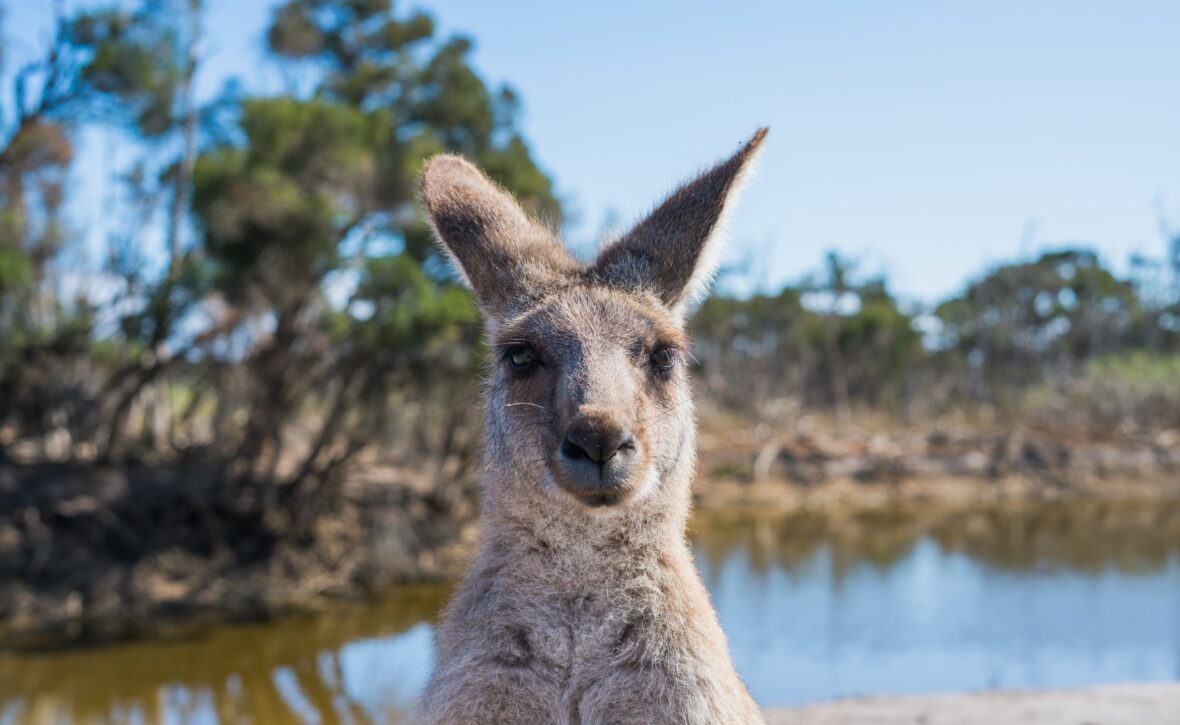Swedish company’s animal detection system can identify and avoid deer, elk and caribou, but is yet to work against the marsupials’ movements.
Volvo’s self-driving car is unable to detect kangaroos because hopping confounds its systems, the Swedish carmaker says.
The company’s “Large Animal Detection system” can identify and avoid deer, elk and caribou, but early testing in Australia shows it cannot adjust to the kangaroo’s unique method of movement.
The managing director of Volvo Australia, Kevin McCann, said the discovery was part of the development and testing of driverless technology, and wouldn’t pose problems by the time Volvo’s driverless cars would be available in 2020.
“Any company that would be working on the autonomous car concept would be having to do the same developmental work,” he said. “We brought our engineers into Australia to begin the exercise of gathering the data of how the animals can move and behave so the computers can understand it more.”
Earlier this month, Volvo’s Australian technical manager, David Pickett, told the ABC the troubles had arisen because their cars’ object detection systems used the ground as a reference point.
This meant a kangaroo’s hopping was making it difficult to judge how close they were.
“When it’s in the air, it actually looks like it’s further away, then it lands and it looks closer,” he said.
McCann added: “Autonomous cars are a continuing development. A driverless car does not yet exist, and developing technology to recognise kangaroos is part of that development.
“We are developing a car that can recognise kangaroos,” he said.
Volvo’s detection system was designed in Sweden, where it was tested in areas populated with moose, before trials at a nature reserve in Canberra revealed the problem with kangaroos.
Kangaroos cause more accidents than any other animal in Australia – the marsupials are responsible for about 90% of collisions between vehicles and animals – although most are not serious.
A spokeswoman for Robert Bosch Australia, which develops component technology for driverless cars, said their system could theoretically recognise kangaroos.
“Although it hasn’t been tested in a kangaroo-specific environment, there was an instance where black swans were interfering, and so they had to build into the car the ability to recognise animals,” Amy Kaa said.
Volvo plans to release its first autonomous cars by 2020 and has pledged zero fatalities or serious injuries from all its cars by that time.
“The whole development process has to take in as many variations of conditions as possible,” McCann said. “It’s a fairly drawn-out process. We don’t even refer to it specifically as kangaroo detection, it’s what we call small animal detection.”
The carmaker offers now semi-autonomous features in its S90 and XC90 models, which it says give “a taste of the future of autonomous driving”.
The cars can automatically maintain a safe distance from the vehicle in front, and spot potential collisions in urban environments. McCann said a feature called “run-off road assist” would keep passengers safe in near-collisions.

